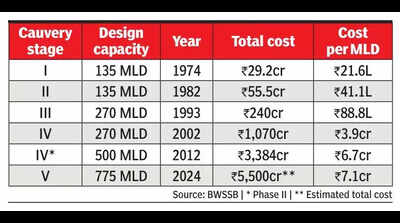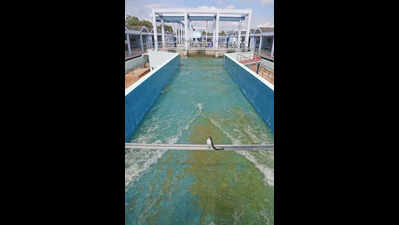- News
- Despite inflation, per-MLD cost of Cauvery Stage V up only 6%
Despite inflation, per-MLD cost of Cauvery Stage V up only 6%
A detailed analysis shows that while there was a 100-fold increase in the cost per MLD when phase II of Stage IV was implemented in 2012 compared to 40 years ago with Stage I, the cost per MLD with Stage V has increased to Rs 7.1 crore compared to Rs 6.7 crore for the second phase of Stage IV.
The overall cost of Stage V is more than Rs 5,500 crore, of which Rs 4,336 crore is for the water supply component and the rest for treatment and other expenses. The per-MLD cost, if we consider only Rs 4,336 crore, will be Rs 5.6 crore compared to Rs 3.5 crore of Stage IV phase II, which had a water supply component cost of around Rs 1,759 crore to bring 500 MLD. BWSSB claims that both phases of Stage IV were standalone projects.
While opting for higher capacity with Stage V is one factor that could have reduced the average cost, there are also others that BWSSB chairperson Ram Prasath Manohar points to.
He added that locking in funds thanks to JICA (Japan International Cooperation Agency) helped in faster implementation. "From the day on which the work started till now, we've gone through various challenges like flooding in the river adjacent to the plant and then Covid. In spite of such disruptions, the final push was very effective, especially in the last year."
Pointing out that a lot of technical hiccups were dealt with, he said one issue, for instance, was the non-availability of valves and other accessories. "Usually, there are standardised types of valves, much like your shirts that you pick off the shelf. But for Stage V, all the valves had to be tailor-made, given that the use of 3,000mm diameter pipes was the first of its kind. Therefore, the valves were of specially fabricated design."
End of Article
FOLLOW US ON SOCIAL MEDIA











